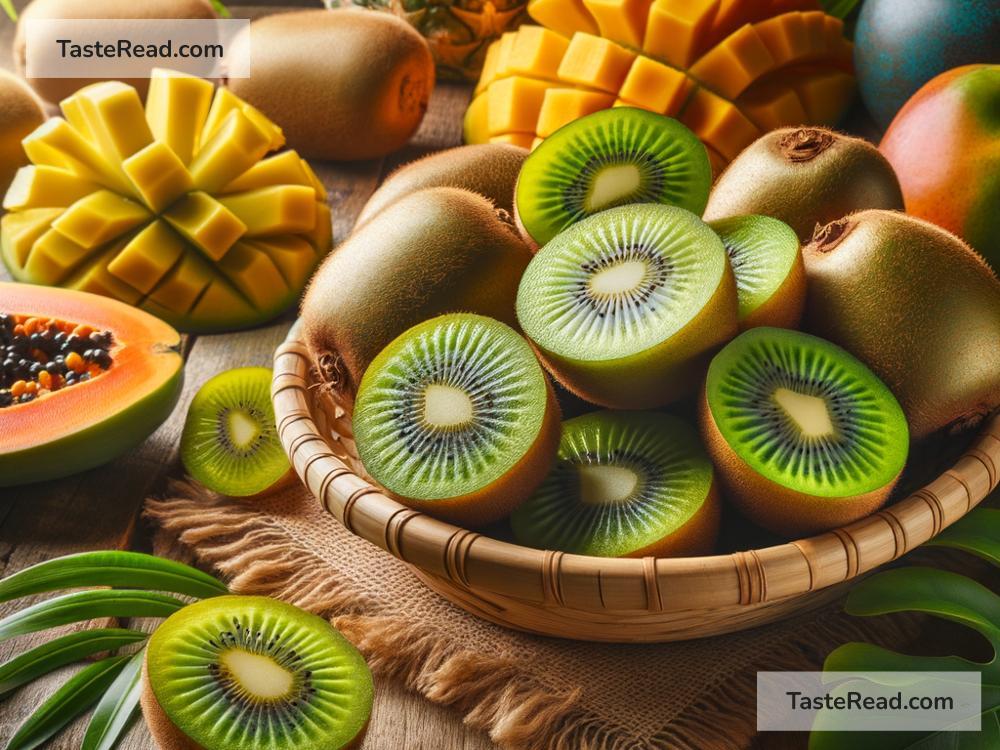How Kiwis Became a Symbol of Exotic Fruits
If you have ever bitten into a kiwi, you know it’s not only delicious but also unique. Its bright green flesh, dotted with tiny black seeds, and fuzzy brown skin make it easy to recognize. But have you ever wondered how this fruit became one of the world’s most popular symbols of exotic fruits? The story of the kiwi is fascinating, involving history, culture, and clever marketing. Let’s dive into how this little fruit became a superstar in the world of exotic foods.
The Humble Beginnings of the Kiwi
Kiwis, originally known as the Chinese gooseberry, come from China. The fruit has been grown there for centuries and was mostly eaten locally. In China, the kiwi wasn’t considered particularly special; it was a nice fruit but not widely celebrated.
Everything changed around the early 20th century. In 1904, seeds of the Chinese gooseberry were brought to New Zealand by Mary Isabel Fraser, a teacher who had visited China. New Zealand’s fertile soil and mild climate proved to be ideal for growing this fruit, and farmers in New Zealand began cultivating it on a larger scale.
Over time, New Zealand growers started experimenting with the fruit, improving its size, taste, and appearance. They also realized the Chinese gooseberry needed a new name to appeal to international markets. Thus, the fruit was renamed “kiwi,” after New Zealand’s national bird. The kiwi bird is small, brown, and fuzzy—just like the fruit. The name was catchy, simple, and directly tied to New Zealand’s identity.
The Rise of the Kiwi as an Exotic Fruit
During World War II, American soldiers stationed in New Zealand were introduced to the kiwi. They enjoyed its sweet, tangy flavor and brought tales of this unusual fruit back to the United States. In the 1950s and 1960s, New Zealand began exporting kiwis globally, especially to North America and Europe.
The timing was perfect. After World War II, globalization was growing, and people in Western countries were becoming more curious about exotic foods. The kiwi’s green color and slightly tropical taste made it stand out from more traditional fruits like apples and oranges. It was seen as something fresh, new, and exciting.
New Zealand growers played a huge role in promoting the fruit. They carefully marketed the kiwi as a premium, exotic product. Packaging included images of green slices and beautiful presentations, making it look fancy and sophisticated. Media campaigns highlighted its health benefits; kiwis are packed with vitamin C, fiber, and antioxidants. Slowly but surely, the fruit gained a reputation as a luxurious treat.
A Global Success Story
As demand for kiwis grew, other countries began to cultivate them. Italy, Chile, and even China (its original home) became major producers. Despite this, New Zealand remains closely associated with the fruit. The name “kiwi” itself ties it to New Zealand culture, giving the country a unique identity tied to the fruit.
Today, kiwis are sold in supermarkets all over the world. Their exotic image has stayed strong, thanks to their distinctive look and vibrant flavor. In the world of smoothies, desserts, and salads, a kiwi slice is often used as a decorative touch—it instantly makes a dish look more tropical and exotic.
Interestingly, farmers have also created new varieties of kiwi over the years. The classic green kiwi is still the most popular, but now you can find golden kiwis, which have smooth skin and a sweeter taste. These variations have helped keep the fruit exciting and popular among consumers.
What Makes Kiwis Special
There’s no doubt that the kiwi stands out from other fruits. Its unique appearance is part of the charm; it’s not often you find a fruit with bright green flesh and tiny seeds arranged in a perfect pattern. The contrast between the fuzzy brown skin and the vibrant interior makes it visually appealing.
Its flavor is another reason for its popularity. Kiwis are both sweet and slightly tangy, which makes them refreshing and versatile. You can eat them raw, blend them into smoothies, use them as a topping for desserts, or even mix them into savory dishes.
Beyond taste, kiwis are packed with nutrients. They are rich in vitamin C, which boosts your immune system, and they also contain fiber for healthy digestion. Many people consider kiwis a “superfruit” because of their impressive health benefits. This nutritious profile has made them a favorite among health-conscious consumers.
The Kiwi’s Symbolic Power
The kiwi’s journey from a simple Chinese fruit to a global symbol of exotic foods shows the power of branding and marketing. By renaming and promoting the fruit strategically, New Zealand growers created an image that people associate with freshness, luxury, and adventure.
When you walk into a store and see a kiwi, it’s not just a fruit—it’s a little piece of something special. Its exotic reputation reminds us of how food can connect different cultures and transport us to faraway places.
Next time you enjoy a kiwi, take a moment to appreciate its history. From its humble beginnings in China to gracing plates around the world, the kiwi truly deserves its title as a symbol of exotic fruits. It’s proof that even the smallest things can have a big impact, one slice at a time.


